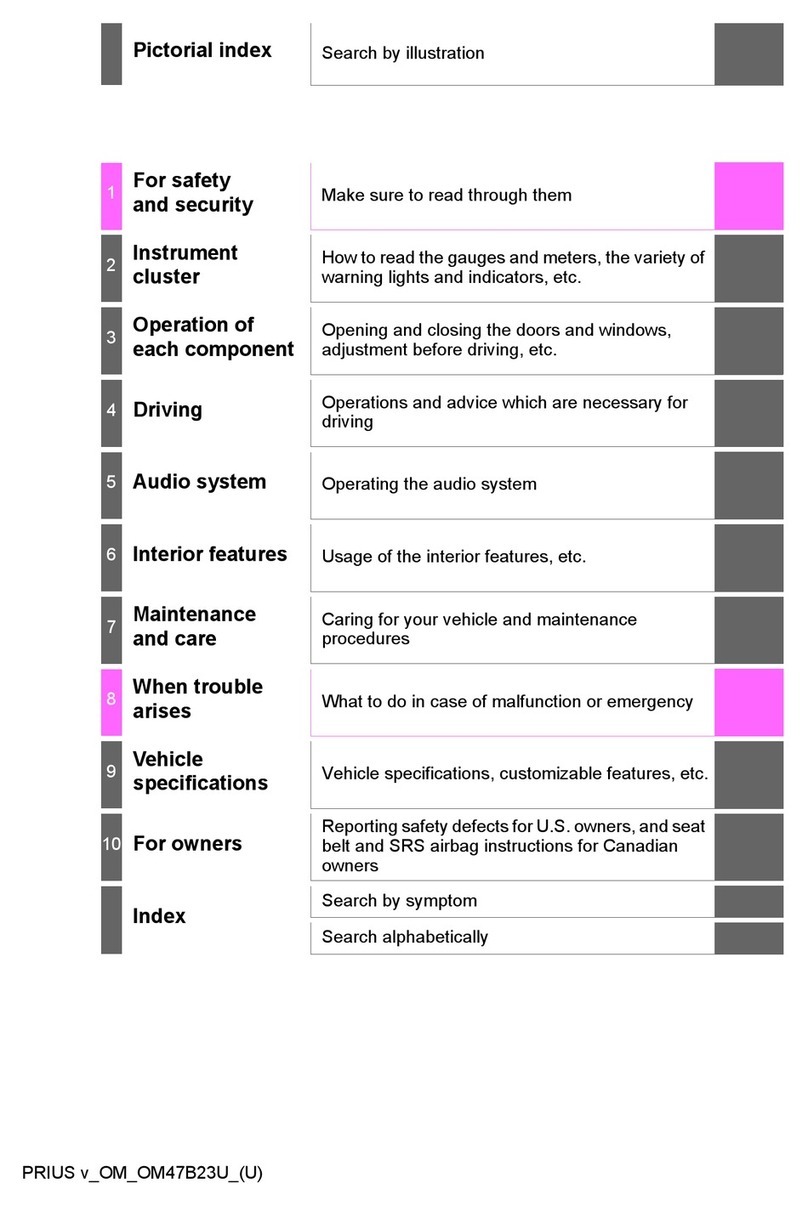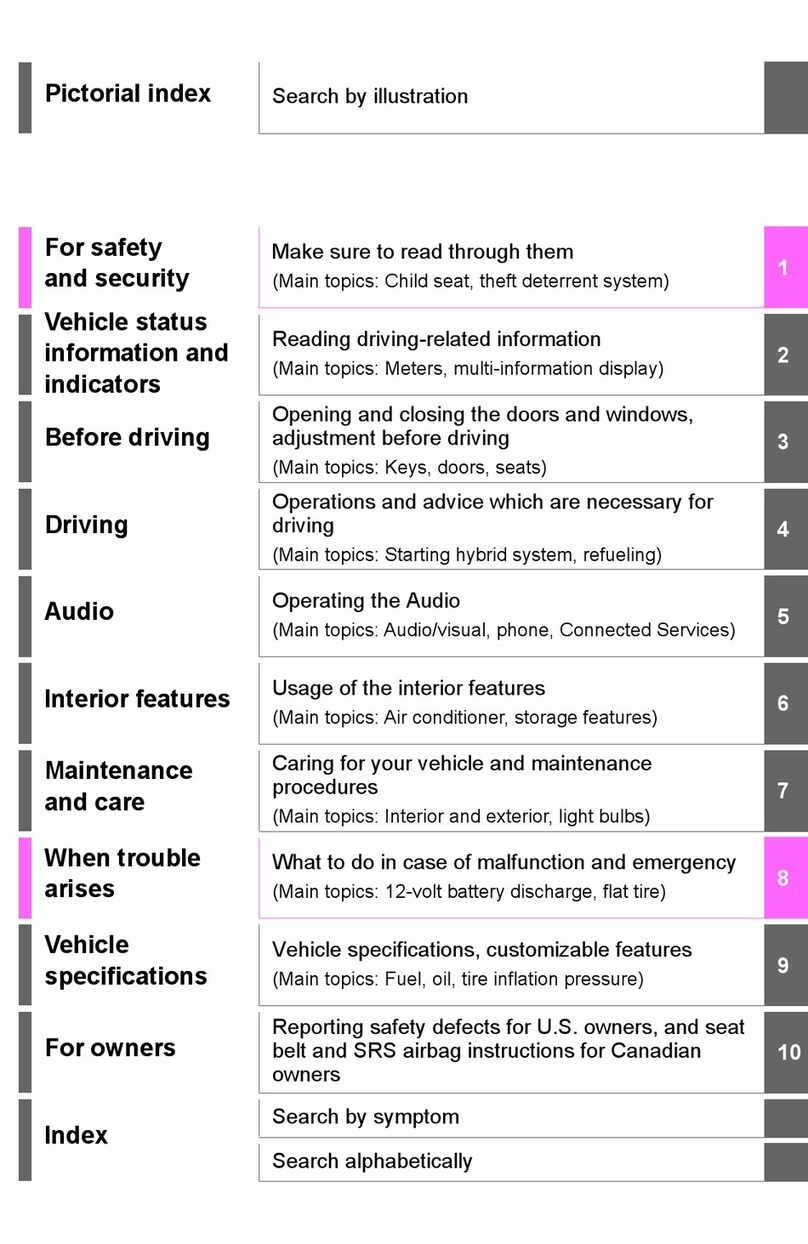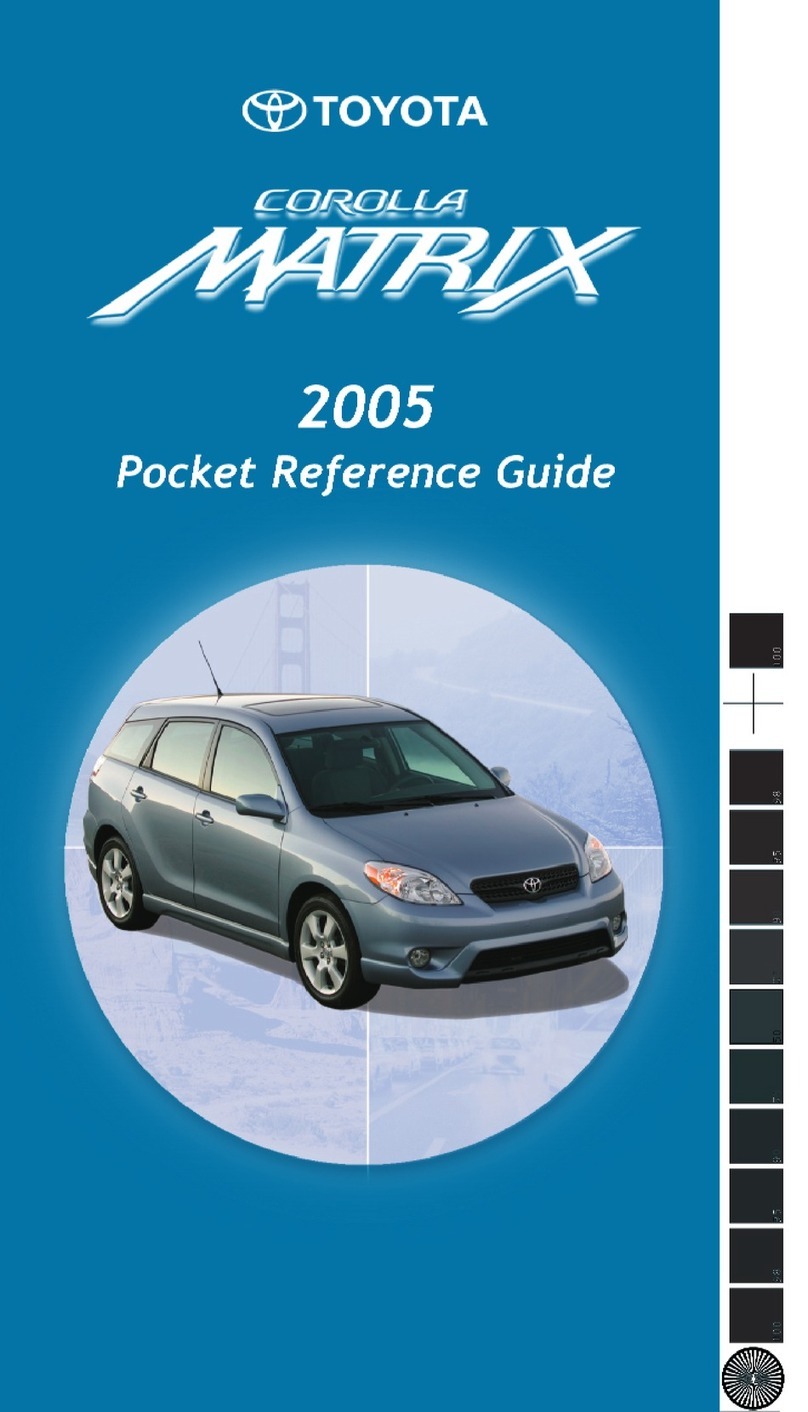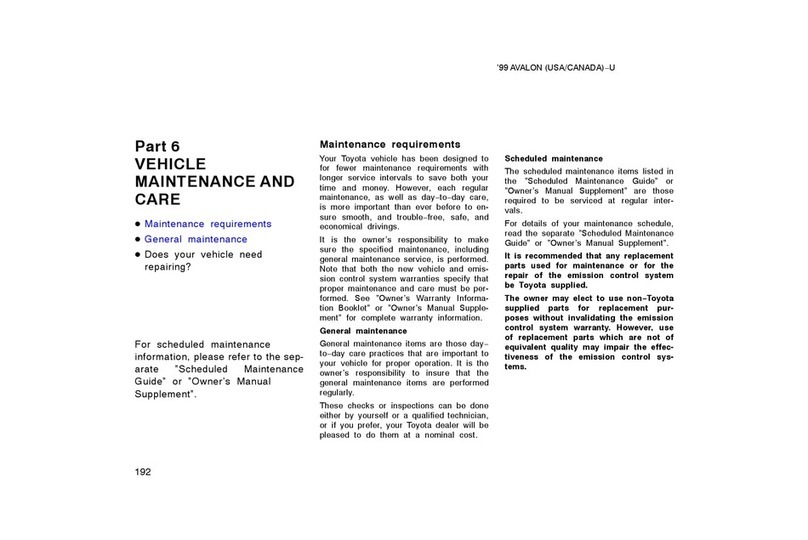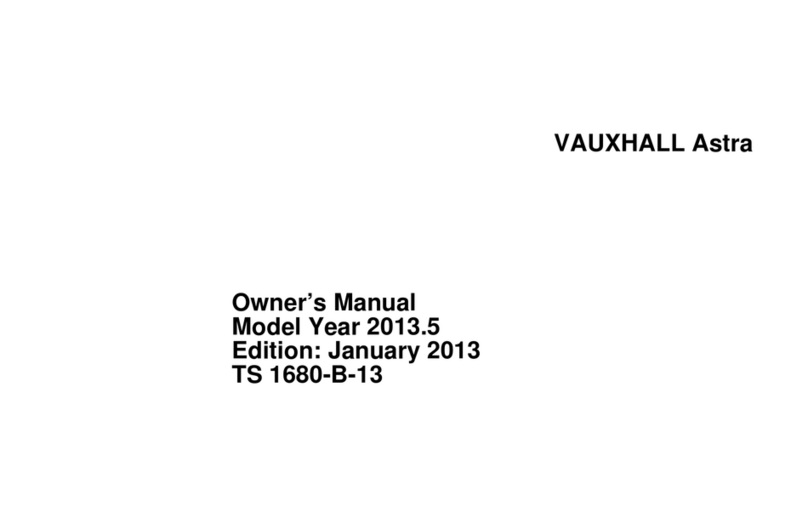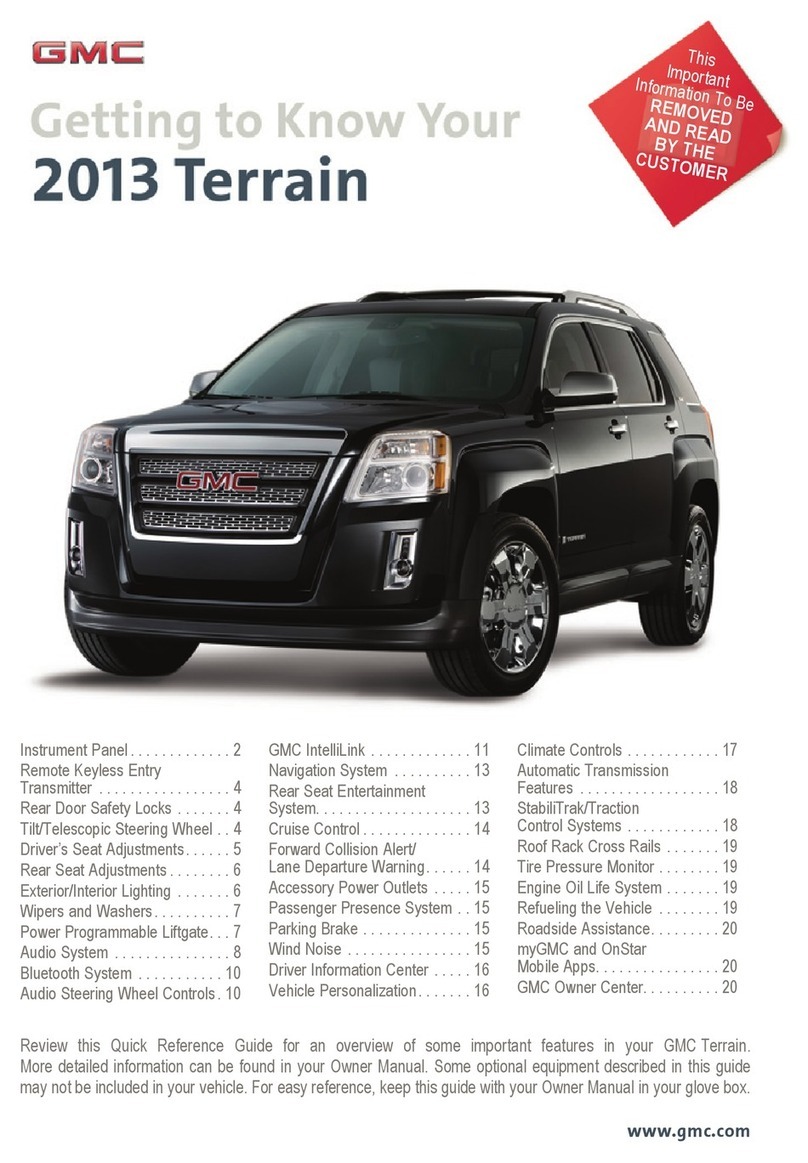10 11
Brakes
Anti-lock Braking System (ABS) with Brake Assist (BA)
and Electronic Brake force Distribution (EBD) work
together for maximum eectiveness.
– Addedstabilityinemergencybrakingsituations.
Emergency Brake Signal (EBS)
The Emergency Brake Signal (EBS) automatically
ashes the rear stop lights in an emergency braking
situation, alerting following trac.
All of the following conditions need to be present for the
system to engage:
Vehicle speed above 55km/h
Brake pedal depressed
Emergency braking detected from the vehicle deceleration.
The Emergency Brake Signal (EBS) disengages when:
Brake pedal released
Emergency braking no longer detected from the
vehicle deceleration
Hazard warning switch pressed.
– Research shows that this warning mechanism helps to
reducerear-endcollisionsbycuttingthefollowing
drivers’reactiontimesby50%.
Vehicle Stability Control (VSC) with Traction
Control (TRC)
Vehicle Stability Control (VSC) with Traction Control
(TRC) automatically adjusts engine output and brake
force of each wheel to correct loss of control through
understeer or oversteer caused by skidding or an
emergency situation
Vehicles tted with VSC also feature a VSC OFF button.
– Helps driver maintain control of the vehicle in
adverse conditions.
Safety Feature
Function
Benet
Tyre Pressure Monitoring System
(Available in countries where TPMS is mandatory; NMSC
to localise)
This advanced system employs a valve and transmitter
installed in each wheel that send signals to a receiver
when tyre pressure is low. In turn, the receiver
communicates with the vehicle’s ECU and a warning
signal appears on the combination meter.
– Helps the driver instantly identify low tyre pressure and
alertsthedrivertotakeremedialaction
– Safety and peace of mind.



